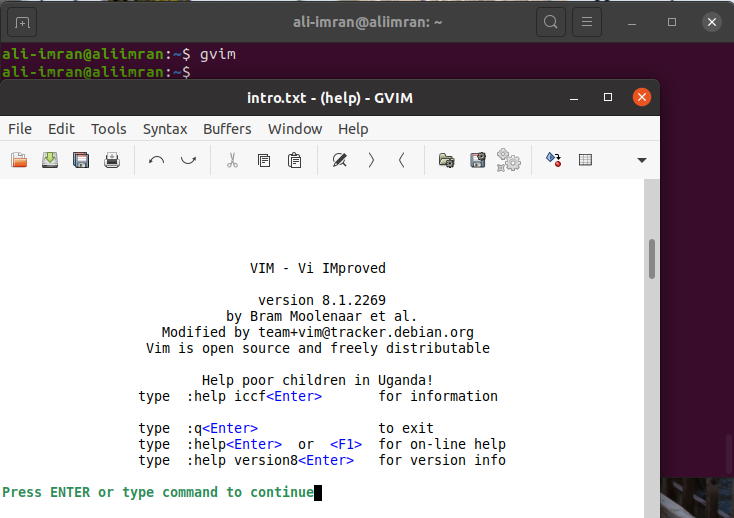

- #How to create executable file macvim from terminal how to#
- #How to create executable file macvim from terminal manual#
I want it to do it for me, as many times as Still, the original problem remains not solved: I don't want Stata to MP state that Lion saves by default when you quit Stata, so itīasically forces Stata to start with a clean slate. The first shell command there, "rm -Rf ", obliterates the Stata !osascript -e 'tell app "StataMP" to open "%:p"' Without any warning messages is to rewrite my RunIt() function as I have tried other tricks too, with help from the MacVim e-mail list.įor example, one way to get Stata to open my do-file in the editor The blank spaces on either side of > are as shown above, if that Then Stata will start with the do-file editor open with the correctĭo-file loaded. "missing value" warning but have no effect on Stata, as far as I can Running, either in terminal or in the Vim command mode, produce the Subsequent calls to do-file, after Stata is The same thing happens if I edit Documents/hello.do in Vim and in This makes Stata 12 start up with the do-file editor open with a blankĭo-file that is called hello.do. Suppose I had aĭo-file in the Documents folder that had two lines in it: The do-file bash script you suggested kind of works.
#How to create executable file macvim from terminal how to#
I will just take one problem at a time: first I sort out how to make I am making some progress, but I'm not there yet. Note that this is the latest version of this plugin, which supports Tomcat7 server.Notice: On April 23, 2014, Statalist moved from an email list to a forum, based at. cons – a size of the file is much larger, due to packing Tomcat embedded distribution inside a w ar file.pros – having one file, easy to deploy and run.To run the application, we just write java -jar target/webapp.jar in our console and try to test it by specifying the localhost:8080/ in a browser. To build a j ar, we run man package, which will result in creating webapp.jar in our target directory. The goal is set as exec-war-only, path to our server is specified inside configuration tag, with additional properties, like finalName, charset etc. In order to do that, we need to use different plugin, designed for creating executable jar files: In the last part, we want to cover a standalone web application that is packed inside a j ar file. cons – complex configuration (especially if we want to use advanced features).pros – dependencies inside the jar file, advanced control of packaging our artifact, with shading and class relocation.The output file will be named core-java-0.1.0-SNAPSHOT-shaded.jar, where core-java is our project name followed by snapshot version and plugin name. Second, we need to specify the transformer implementation we used the standard one in our example.įinally, we need to specify the main class of our application. There are three main parts to this configuration.įirst, marks all dependencies to be packaged into the jar. cons – basic control of packaging our artifact, for example, there is no class relocation support.pros – dependencies inside the jar file, one file only.Output in our example will be named as core-java-jar-with-dependencies.jar. In the descriptorRefs part of the configuration code, we provided the name that will be added to the project name. The difference is that the Maven Assembly Plugin will automatically copy all required dependencies into a jar file.
#How to create executable file macvim from terminal manual#
Similarly to the manual approach, we need to provide the information about the main class. Let's take a look at the configuration in pom.xml: The main goal in the assembly plugin is the single goal, which is used to create all assemblies (all other goals are deprecated and will be removed in a future release). The Apache Maven Assembly Plugin allows users to aggregate the project output along with its dependencies, modules, site documentation, and other files into a single, runnable package.

The advantages and disadvantages of this approach are: Please note that we need to provide a fully qualified name of the class, which means it will include package name. We add a classpath, with all dependencies (folder libs/), and provide the information about the main class. The most important part of this is the manifest configuration. Second, we are going to create executable and classpath-aware jar, with the link to the dependencies copied in the first step: Ĭom. In our case, we'll create a folder named libs inside the project build directory (which is usually the target folder). First, we specify the goal copy-dependencies, which tells Maven to copy these dependencies into the specified outputDirectory.


 0 kommentar(er)
0 kommentar(er)
